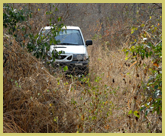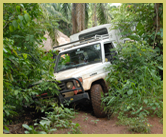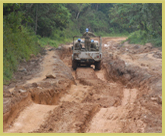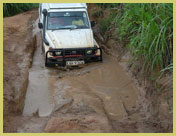




About the African World Heritage website

About the Website Developer. This website is a private initiative of British-born conservationist, author and photographer Dr Peter Howard. Peter has worked in the field of African wildlife conservation since 1980, and is uniquely placed to provide an authoritative perspective on the continent’s world heritage sites – especially those that are listed under the Convention’s natural criteria. He has lived in Africa for more than 30 years, and is currently based in Nairobi, Kenya. Over a period spanning more than three decades, he has visited most African countries, and served in a range of professional positions with some of the continent’s leading conservation and protected area management agencies. He has also served as Director of the Africa Program of the New York-based Wildlife Conservation Society, with responsibility for projects across the continent. His long association with conservation efforts in many of the continent’s natural world heritage sites – and concern for their conservation – led him to begin photographing and documenting these special places more systematically beginning in 2005.
In developing this website, Dr Howard has brought together a team of concerned colleagues and friends to present the most comprehensive visual impression of Africa’s world heritage sites available anywhere. The aim is to give ‘a sense of place’ by providing a slideshow of 30-50 images of each site. The photos tell the story – the landscapes, monuments, art and cultural heritage, wildlife and people as well as some of the conservation and management challenges these places face. The photographic images are supplemented with maps, information, personal impressions and links to Google Earth and other relevant websites.
Key contributors to the site include:
Bridget Goldsmith and partner David Trump. Bridget and David undertook a major expedition across Africa in 2009, driving from England to the Cape through North Africa, via the Nile route to eastern and southern Africa. They contributed photos of Kairouan and Dougga (Tunisia); Sabratha, Ghadames, Leptis Magna, and Cyrene (Libya); Gebel Barkal and Meroe (Sudan); Tiya (Ethiopia); and Tsodilo (Botswana). Bridget and David are currently based in rural Somerset (England) where Bridget is a teacher and David runs an eco-pollution control business (www.reedbeds.com).
David Coulson is a professional photographer and founding CEO of the Trust for African Rock Art based in Nairobi, Kenya. David – through the Trust – contributed his photos of rock art sites across the continent, including Tassili n’Ajjer (Algeria); Tadrart Acacus (Libya); Kondoa (Tanzania); Matobo Hills (Zimbabwe) and Tsodilo (Botswana).
From South Africa, various contributors to the Digital Library on the world heritage sites of South Africa have generously shared their material on the country’s three cultural landscapes and the Robben Island site, including Marna Cilliers-Hartslief (Sterkfontein, Richtersveld), Tim Hauf (Robben Island, Mapungubwe); and Kimi Steward (Robben Island, Sterkfontein).
Elsewhere, photos of various individual sites have been provided by John Mason (Harar, Ethiopia); Andras Sztankoczy (Chongoni Rock-art Area, Malawi); Dr Tim Davenport (Stone Town, Zanzibar) and Dr Andy Plumptre (Kasubi Tombs, Uganda). All have contributed their material free of charge in the interest of raising awareness of Africa’s most precious heritage, and contributing to its long-term protection.
Many of Africa’s world heritage sites are located in parts of the continent that are extremely difficult to access and rarely visited - including areas of civil strife – so the logistical challenges of reaching so many places across this vast continent have been immense. At many of the world heritage sites, generous support has been provided by individuals and organisations working in the field, at the ‘cutting edge’ of conservation. The work of these people is described and their support acknowledged in the individual site descriptions in the ‘Places’ section of the website.
Interpretation of Quick Reference Scores
Each of the natural world heritage sites featured in this website is given a five-star rating against various criteria, aimed at providing a ‘rough and ready’ assessment of its value, interest and visitor potential. These ratings are inevitably rather subjective, and should be taken only as an expression of opinion. The criteria are as follows:
- Scenery. Aesthetic landscape values, where places with dramatic scenery and far-reaching views score most highly
- Wildlife/Biodiversity. The quantity and quality of plant and/or animal life, where places with large congregations of mammals and/or birds; and/or unusual species; and/or exceptional diversity, score most highly.
- Accessibility. An indication of the feasibility of making a visit, for an international visitor from outside Africa, in terms of the amount of time, effort, discomfort and cost involved.
- Facilities. An indication of the quantity and quality of tourism infrastructure at the site or its immediate surroundings, including roads, trails, accommodation and interpretation facilities.
- Integrity. An indication of ecological integrity, in terms of the extent that the site remains in an intact, pristine, natural condition.



.jpg)
